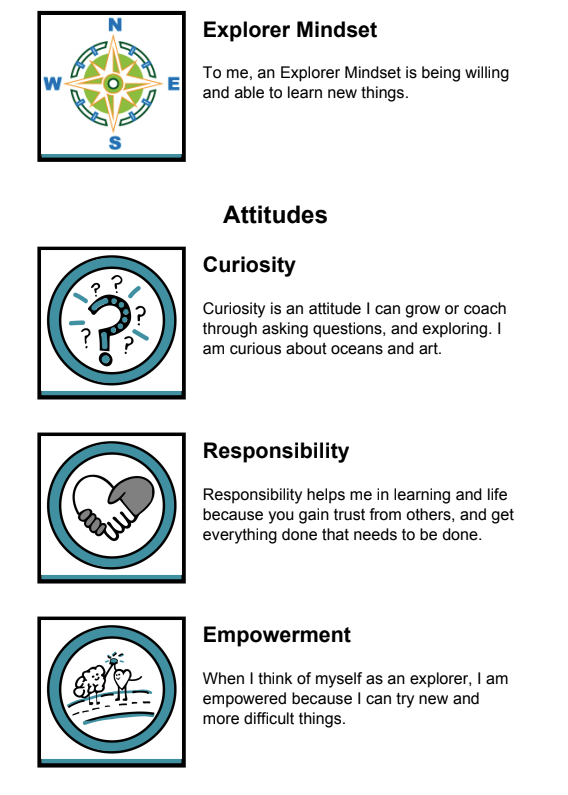What is the purpose of school, of education? Answers to this question have varied over time, place and perspective. In an ACSD article author Willona Sloan describes its evolution from “instructing youth in religious doctrine, to preparing them to live in a democracy, to assimilating immigrants into mainstream society, to preparing workers for the industrialized 20th century workplace”. Purpose also spans from pragmatic to idealistic. Philosopher, educator and reformer John Dewey’s stated, “Education is not preparation for life. Education is life itself”.
Local Diversity, Common Theme
Perspectives may vary but from place to place schools define their purpose in a mission statement. Serving as a compass for the organization, the mission of a place of learning is unifying and serves as a foundation for all activities, policies and and ancillary services. Missions vary, but a common theme that binds them is that school is a nurturing place to develop the skills and knowledge to be lifelong learners. As students graduate their communities want them to feel empowered and go off to enjoy a lifetime of independent learning, fulfilling careers and happy personal lives.
The Engagement Cliff
Despite this universal goal, polls show that student engagement declines steadily through middle and high school. Annual surveys by Gallup show the same precipitous drop, and it has been dubbed “The School Cliff”. Defined by Gallup as students involvement with and enthusiasm for school, engagement shows the starkest declines through middle school years.
Imagine a time you tried to learn something new and just weren’t “into” it? Compare that with a time you wanted to learn something so much you thought about it all the time? How does this engagement affect our ability to absorb and retain knowledge? We cannot deny that this data by Gallup reveals a worrying challenge in the field of education.
How do we facilitate a learning environment where all learners stay engaged? How do we move beyond engagement to empowerment?
Empowerment Through Exploration
Student choice, incorporating students interests, personalizing learning, having students design and assess their own learning, cultural responsiveness, growth mindset, social-emotional learning…These methods and more help us move learners from compliance to engagement to empowerment. They also go hand-in-hand with the theme of Exploration, and learning with an Explorer Mindset. What it means to have an Explorer Mindset
Seeing yourself as an explorer means that no matter what stage in life we are in, we are always learning new things. Exploration is limitless and that means our discoveries, our learning, is limitless too. There is always a “further”.
Three Ways an Explorer Mindset can Help Engage and Empower Learners
Empowering Growth: When we build the mindset of an explorer through attitudes and skills, we recognize that our  attitudes affect our actions and that we can practice a skill to get better at it. Our abilities become limitless. Using the Explorer Mindset in this way promotes social-emotional learning right along with content.
attitudes affect our actions and that we can practice a skill to get better at it. Our abilities become limitless. Using the Explorer Mindset in this way promotes social-emotional learning right along with content.
Personalizing Experiences: When applying an Explorer Mindset, learners are in a role. They are explorers of the world, navigating, discovering and taking on challenges. National Geographic Learning Framework and Explorer Mindset Video. By creating their own mindset, learners are also explorers of themselves in their path of growth in learning. Being an explorer goes hand-in-hand with student-driven experiences.
Presenting Learning as an Undiscovered Territory In an information age where answers are at our fingertips, can learners feel like there is nothing left to be discovered? That searching on the Internet contains all the information we need to know? There is so much left to discover. By building the attitudes and skills of an Explorer Mindset and presenting learning as exploration, the perspective on knowledge changes from a finite internet search to a limitless expanse of discoveries through experiences.
Sloan, W. (2012, July). What is the Purpose of Education? Retrieved April 16, 2019, from http://www.ascd.org/publications/newsletters/education-update/jul12/vol54/num07/What-Is-the-Purpose-of-Education¢.aspx
Brenneman, R. (2019, February 20). Gallup Student Poll Finds Engagement in School Dropping by Grade Level. Retrieved April 15, 2019, from https://www.edweek.org/ew/articles/2016/03/23/gallup-student-poll-finds-engagement-in-school.html
Gallup, Inc. (2017, June 01). Student Enthusiasm Falls as High School Graduation Nears. Retrieved April 16, 2019, from https://news.gallup.com/opinion/gallup/211631/student-enthusiasm-falls-high-school-graduation-nears.aspx
National Geographic Education Staff. (2019, February 27). Developing a “National Geographic Explorer” Mindset in the Classroom. Retrieved April 16, 2019, from https://blog.education.nationalgeographic.org/2019/02/27/developing-a-national-geographic-explorer-mindset-in-the-classroom/

